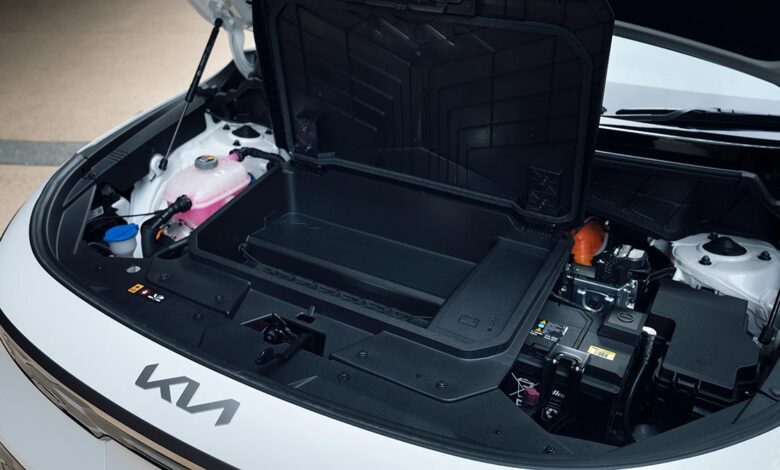5 Features That Are Exclusive to Electric Vehicles Only

In 1891, William Morrison from Des Moines developed the first, fully functional six-seater electric vehicle in the U.S. A few years later in 1897, 12 electric cabs picked up and dropped off passengers in New York City. However, in the following years, from 1914 to 1934, Americans once again set their eyes on gasoline vehicles as gas prices declined greatly. Plus, as most rural Americans had little or no access to electricity, this factor also contributed to the decline of electric vehicles (EVs) back then.
At the start of the 21st century, EVs made a comeback on the American roads. However, this time EVs had the backing of the government’s policies as they pushed people towards driving environment-friendly vehicles. Plus, people too, liked the concept of driving electric-powered vehicles, that needed little maintenance. Fast forward to today, the automobile industry has vowed to go fully electric in the coming years.
Besides being environment-friendly, what makes these vehicles different from and better than the gasoline-powered ones? This is what I explore in this article. Below, I have shared some features that are only exclusive to EVs:
Over-The-Air Updates
In over-the-air (OTA) updates, EVs receive important updates directly from the manufacturer. It’s like getting software updates on a smartphone overnight and waking up to its improved version. EVs get software over-the-air (SOTA) and firmware over-the-air (FOTA) updates that help in fixing bugs and improving EV software.
Plus, there is no need to visit the company’s workshop or any workshop for that matter. The only thing needed to download and install these updates is a reliable connection, for instance, Spectrum Internet. It’s because some OTA updates may be bulky and a quality internet can help to reduce the installation time.
Bidirectional Charging
EVs need electricity to charge their batteries. Then, electric motors use the electricity stored in batteries to run the EV. This is the basic mechanism of how EVs work, right?
However, the interesting part here is that the EV batteries have bidirectional charging and it’s called vehicle-to-load (V2L) charging. For instance, you can use an EV’s battery to charge your electronic devices, a small campsite, and even another EV.
Soundless Driving and Maintenance
The sound of a V-8 or a V-10 engine may be music to some people’s ears. And if that’s what you’re looking for in an EV, then let me tell you; EVs produce minimal or no sound at all while driving.
EVs don’t produce sound because they have fewer moving parts as compared to gasoline-powered vehicles. And because EVs have fewer moving parts, it translates to less maintenance cost. From time to time, conventional vehicles need an oil change, if not more. While vehicle maintenance can be costly, it’s also an inconvenience for those people who are always short on time.
However, an EV doesn’t require frequent maintenance as its main component, lithium-ion batteries are reliable. Plus, as I mentioned above, a large part of EV maintenance is updating its software and firmware which can be done without visiting any workshop.
Infotainment Screens
The infotainment screens in EVs are a massive flex as they’re getting bigger and better with the day. Well, not just a flex because the infotainment screens in EVs make them more interactive. Technically, most of the major functions, for instance, climate control, audio systems, navigation, and more can be controlled via infotainment screens.
Plus, EV owners may see their car’s performance, install updates, play games, and do more on their infotainment screens. Besides their functionality, the infotainment screens in EVs add to their beauty. That’s how massive infotainment screens are in some EVs:
- Mercedes EQS 580: 56.0 inches.
- Cadillac Celestiq: 55.0 inches
- Lincoln Nautilus: 48.0 inches
- Cadillac Escalade: 38.0 inches
- Lucid Air: 34.0 inches
EVs are Safer than Gas Cars
Be it a conventional, hybrid, or fully electric car, safety is paramount in them. Generally, vehicles have become safer than ever, but EV safety measures are one to watch out for.
EVs have a low center of gravity that makes them safer than gas vehicles. With a low center of gravity, the chances of EVs tipping over on curves at higher speeds reduce significantly. Plus, the regenerative braking in EVs is no less than a marvel as it can extend brakes’ lifespan and lower the risk of brake failure.
Also, EVs are equipped with several sensors that keep the drivers informed about their surroundings.
Factors to Consider Before Buying an EV
Now that you know how EVs are different than gasoline vehicles, let me give you some suggestions on important factors to consider before buying an EV.
- A lasting battery range means you can travel great distances without charging your EV frequently. Also, if you’re buying a used EV, besides inspecting the EV’s condition, ensure its battery’s health is good. If you’re not an expert in this, get help from a professional or a friend who knows a great deal about EVs.
- Consider at what frequency an EV gets updates. Ideally, your EV shouldn’t get OTA updates every month because you may never get accustomed to your EV or face issues while navigating its interface. However, OTA updates shouldn’t be delayed for too long as well as your EV’s efficiency may decrease over time without them.
- If you’re not installing a home charging port for EV, consider exploring the public charging options. Ideally, a public charger should be near your house or on the way to your daily commute.
Keep an eye for more latest news & updates on USA Tech Magazine!





